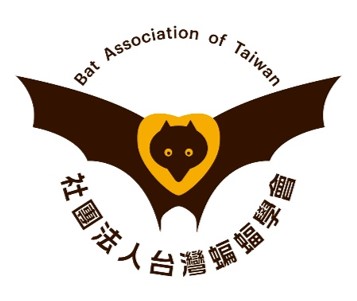蝙蝠研究
2016_台灣蝙蝠冠狀病毒感染之血清學研究_蘇柏綱
出版年份:2016
研究生:蘇柏綱
分類:碩士論文
題目:台灣蝙蝠冠狀病毒感染之血清學研究
Title:Serological detection of bat coronavirus in Taiwan
摘要:
蝙蝠已被證明是甲型(Alpha)與乙型(Beta)冠狀病毒的自然宿主。目前發現台灣蝙蝠冠狀病毒可分類為三個主要分支,其中甲型有兩個分支,分別為類高頭蝠冠狀病毒512與類摺翅蝠冠狀病毒1A,一個分支屬於乙型的類嚴重急性呼吸道症候型冠狀病毒(Severe acute respiratory syndrome related coronavirus, SARSr -CoV)。本研究目的為瞭解台灣蝙蝠族群中感染蝙蝠冠狀病毒的情況及蝙蝠冠狀病毒感染人類引發抗體的可能性。蝙蝠生物學家與蝙蝠接觸頻率高,且常被蝙蝠抓傷或咬傷,是最有可能被蝙蝠冠狀病毒感染的危險族群,所以成為本研究的主要人類族群。本研究先將台灣高頭蝠冠狀病毒512(S1/TW/2013)的結構蛋白序列解碼後,再利用台灣的三分支蝙蝠冠狀病毒與兩個人類常見冠狀病毒(Human CoV 229E和OC43)的核殼(Nucleocapsid, N)蛋白,依抗原特異性將其分為三段,建立最佳化西方墨點法和酶聯免疫吸附試驗(Enzyme-linked immunosorbent assay, ELISA)來測試蝙蝠及人類體內蝙蝠冠狀病毒的特異性抗體。本研究發現台灣高頭蝠冠狀病毒512流行於台灣蝙蝠族群間,感染率與它們的棲息習慣有很大的相關性,且雌性哺乳期蝙蝠普遍擁有較高的特異性抗體檢出率。在37位蝙蝠研究人員的血清中,有10位(27%)檢測出高頭蝠冠狀病毒512核殼蛋白N3片段的特異性抗體,有8位(21.6%)檢測出SARS-CoV核殼蛋白N3片段的特異性抗體。長期研究蝙蝠與曾被蝙蝠抓傷咬傷都增加特異性抗體的檢出率,與蝙蝠接觸可能增加被感染的風險。未來將進一步以真核細胞表達刺棘蛋白片段,以免疫螢光染色法檢測樣本中特異性更高的冠狀病毒刺棘蛋白片段抗體。
Abstract:
Bats have been suggested to be natural reservoirs of severe acute respiratory syndrome (SARS) and Middle East respiratory syndrome coronavirus (MERS-CoV). Diversed Alphacoronavirus and Betacoronavirus have been isolated from many bat spcieses. Phylogenetic analysis classified the bat CoV isolated in Taiwan into three lineages: Scotophilus bat CoV 512-related and Miniopterus bat CoV 1A-related lineages belonged to the genus Alphacoronavirus, and SARS CoV-related lineage in the genus Betacoronavirus. This study planed to investigate the status of bat CoV infection in the bat populations of Taiwan and the possibility of antibody production induced by the infection of bat CoV in humans. Bat biologists have high risks to be infected by bat CoV because they contacted bats constantly and were frequently scratched and bitten by bats. Therefore, bat biologists are the major target population in this study. First, we sequenced the genes of structural proteins of Scotophilus bat CoV 512(S1/TW/2013). Next, we developed and optimized Western blotting and enzyme-linked immunosorbent assay (ELISA) based on nucleocapsid (N) protein fragments of 3 bat CoV linage of Taiwan and 2 human CoV (229E and OC43) commonly found in human population to test CoV-specific antibodies in bats and humans. N protein of individual CoV was divided into three fragments according to their antigenicity and immunogenicity. Our survey revealed that the antibodies specific to the N3 fragment of Scotophilus bat CoV 512 were highly prevalent in different bat species in Taiwan. The lactating female bats generally have higher detection rates of antibodies specific to bat CoV. The detection rates of bat CoV-specific antibodies have great correlation with the roosting behaviors. Within 37 bat biologists, 10 of them (27%) had antibodies specific to the N3 fragment of Scotophilus BtCoV 512 and 8 of them (22%) had antibodies specific to the N3 fragment of SARS-CoV. Higher detection rates of bat CoV-specific antibodies were found in the bat biologists with longer study time on bats and the history of bat bites and scratches. Therefore, the contact history of bats may correlate with the infection risk of bat CoV. To improve the specificity of serological tests, the eukaryotic cells expressing spike proteins of different CoVs will be used to detect the CoV-specific antibodies in the future.
